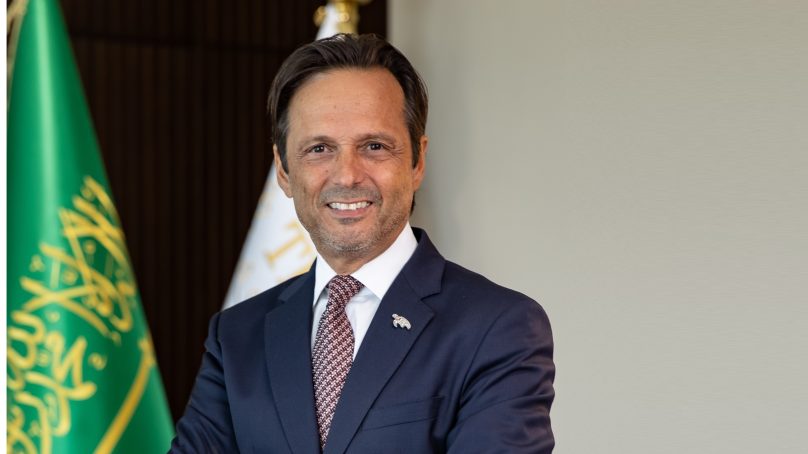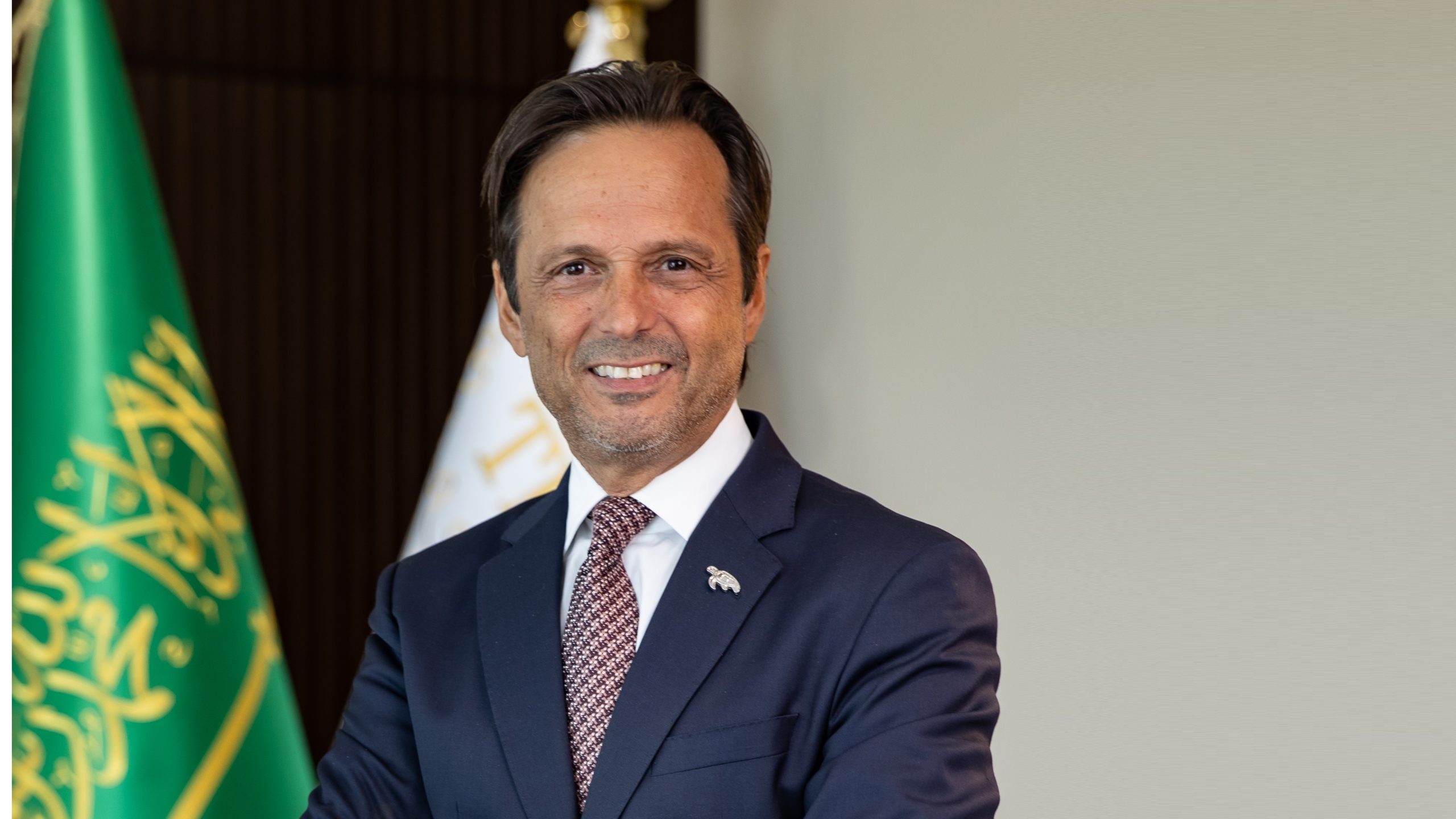In an exclusive interview, John Pagano, the CEO of Red Sea Global, gives us a sneak peek into the ground-breaking regenerative tourism destination The Red Sea and discusses a bold plan to forge a new relationship between luxury tourism and the natural world.
The Red Sea will be ready to welcome the first guests in 2023. What can guests look forward to experiencing and who are your targeted clientele?
The Red Sea offers an unparalleled stay of sustainable luxury in a spectacular setting of idyllic islands, vibrant coral reefs, dormant volcanoes and dramatic dunescapes. Guests can explore our natural marine environment by diving near shipwrecks, kayaking among mangroves, e-boarding and foiling. On land, they can run trails, go abseiling, study falconry and gaze at the stars. The built environment offers stunning architecture, high-end luxury retail and the finest cuisines from the kingdom and around the world. We source food locally to ensure it’s as fresh and sustainable as possible, and we work with local farmers to make sure they adopt the best agricultural practices and maintain the highest quality standards.
Our commitment toward regenerative tourism will be evident from the moment guests step off their aircraft at our solar-powered airport and walk through lush, landscaped gardens that act as a thermal buffer between the interior of the terminal and the outside. Electric vehicles will transport our visitors to their resorts, and the entire destination will be fully powered by renewable energy. The Red Sea aims to reduce its net carbon emissions to zero from day one, and by using technology to monitor our local environment in real time, we can fix problems before they happen.
How does The Red Sea cater to the needs of the modern traveler?
These days, travelers are looking for experiences that are inspiring and personalized, and holiday destinations that are sustainable. The Red Sea is an integrated tourism destination that promises guests unforgettable experiences on land and at sea, both above and below pristine waters. Guests can enjoy a huge variety of authentic activities that are second to none in the world, from hiking or climbing over rugged hills and rock faces to sailing on catamarans and snorkeling. They can also engage with local Saudis and learn firsthand about their customs, craftsmanship and cultural heritage.
Red Sea Global is dedicated to making tourism a force for good, and our ethos as a company aligns closely with consumer sentiment that is increasingly concerned with sustainability. We have set a goal of achieving a 30 percent net conservation benefit in the area by 2040.
Sustainability stands at the heart of The Red Sea. What measures are you taking to honor its green pledge?
As the world’s most responsible property developer, we’re pushing the boundaries in everything we do. Our natural capital is our most valuable asset, so before we even started master planning for The Red Sea, we brought in scientists. We carried out a marine spatial planning simulation for a lagoon at the heart of our project site. We virtually sectioned off 2,081 square kilometers of this lagoon into a grid and consulted scientists to assign a conservation value to each block of this virtual grid. It was the largest assessment of its kind ever made.
We then ran different scenarios for development of the area to arrive at a 30 percent net conservation benefit. As a result of what we learned from these different simulations, we decided to develop only 22 of the 90-plus islands. We’re preserving the remaining 75 percent of the islands, nine of which we’ve designated as special conservation zones. One of them would have been spectacular for a hotel, except that it is a nesting ground for the critically endangered Hawksbill sea turtle. So, we left it to the turtles.
In a separate effort, we surveyed wildlife populations and habitats along 200 kilometers of coastline. Our researchers counted bird nests, coral colonies and even 300,000 fish. No property developer has ever conducted a bigger environmental survey. And we published our survey, for the sake of transparency.
We’re also helping to lead the global shift toward renewable energy. The Red Sea will have the largest microgrid in the world that is powered 100 percent by renewable energy 24 hours a day. To achieve this, we’re building the biggest battery storage on Earth. We’re on track to start generating power from our two main solar farms from April onward.
Red Sea Global is inspired by nature and guided by science. To protect habitats and wildlife, we are farming corals, using innovative floating nurseries. We’re planting and restoring as many as 50 million mangrove trees to sequester carbon at The Red Sea and its sister destination, Amaala. We also have the biggest landscape nursery in the kingdom; we have grown and imported 3.6 million plants and trees since June 2021 and plan to import 30 million of them by 2026. To monitor our progress, we publish annual sustainability reports. Crucially, we will restrict our annual number of visitors to one million, which is the destination’s environmental carrying capacity.
The Red Sea’s initial phase will include the launch of 16 hotels between 2023 and 2024. Which ones are you particularly excited about?
I’m equally excited about all of them. Each resort brings its own unique design and offerings, from stainless-steel over-water villas at our Shebara resort to rooms carved from a mountain face at our Desert Rock hotel.
We’ve been meticulous in the design, construction and quality of our resorts and our offerings to guests. We’ve brought on board some of the world’s most innovative designers and architects, such as Kengo Kuma, Foster+Partners and Killa Design, to name just a few. The beauty of what they’ve created is that all our resorts are so different.
Our partnerships with brands like Six Senses, Four Seasons, SLS, Fairmont and Rosewood will put Saudi Arabia firmly on the international tourism map. They will also deliver career and vocational opportunities for Saudis. The Red Sea and Amaala together will create as many as 120,000 jobs.
















